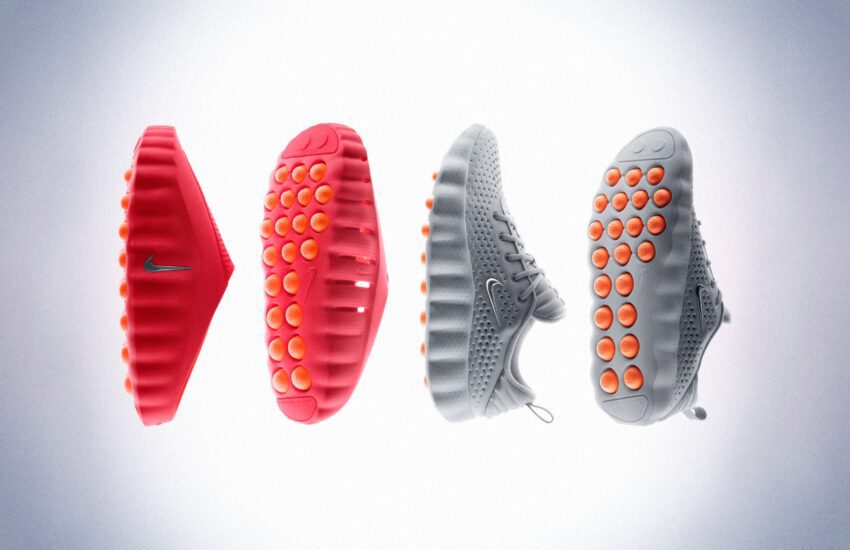
nike is trying to sell you mind-body Nike is venturing into the realm of neuroscience with its latest footwear, designed to enhance athletic performance by stimulating the brain.
nike is trying to sell you mind-body
Introduction to Nike’s Neuroscience-Based Footwear
Nike has unveiled a new line of shoes that it claims are rooted in neuroscience, aimed at activating an athlete’s brain both before and after competition. This innovative footwear includes two distinct models: the Mind 001 mule, priced at $95, and the Mind 002 lace-up sneaker, retailing for $145. Each shoe features a unique array of 22 orange foam nodes embedded in the sole, designed to move independently as the wearer walks. This movement mimics the sensation of walking on natural ground, which Nike asserts is “scientifically shown” to stimulate the foot and activate the brain’s sensory areas.
Design and Technology Behind the Shoes
Innovative Foam Node Structure
The standout feature of the Mind 001 and Mind 002 is the array of foam nodes. According to Nike, these nodes function like “pistons and gimbals,” allowing for independent movement that enhances sensory feedback. This design aims to create a more engaging experience for the wearer, promoting a connection between the foot and the brain. Graeme Moffat, the principal investigator for the Mind Science team at Nike, explains that the nodes are strategically spaced to ensure that each one can be perceived as distinct by the wearer. This arrangement is particularly important, as it allows for varying distances between nodes in different parts of the shoe—closer together under the ball of the foot and farther apart in the heel.
Research and Development
The development of the Mind 001 and Mind 002 was undertaken by the Mind Science team within the Nike Sport Research Lab. This team utilized one of the few mobile brain and body imaging labs available globally to inform their design choices. While Nike has yet to release the scientific evidence supporting its claims regarding the shoes’ efficacy in enhancing focus and performance, spokesperson Jay Paavonpera indicated that a white paper detailing the technology will be published in the coming weeks. He emphasized that the designs were informed by “hundreds of athletes and thousands of hours of testing,” suggesting a rigorous development process.
Market Context and Competitive Landscape
Nike’s introduction of neuroscience-based footwear comes at a time when the athletic shoe market is increasingly competitive. Over the years, Nike has faced challenges from minimalist shoe brands like Vibram FiveFingers and Crocs, which have gained popularity for their unique designs and comfort. In response, Nike has developed products like the Nike Free line, which emphasizes a more natural feel while still providing cushioning. The Mind 001 and Mind 002 appear to be a continuation of this trend, focusing on sensory engagement rather than just cushioning.
Consumer Trends in Athletic Footwear
The athletic footwear market has seen a shift in consumer preferences, with many athletes seeking shoes that offer not only performance but also a connection to their physical and mental states. The rise of wellness culture has led to an increased interest in products that promote mindfulness and body awareness. Nike’s Mind line taps into this trend by positioning itself as a tool for enhancing mental focus and sensory engagement, appealing to both competitive athletes and casual fitness enthusiasts.
Implications for Athletes and Fitness Enthusiasts
Potential Benefits of Neuroscience-Based Footwear
The potential benefits of the Mind 001 and Mind 002 extend beyond mere aesthetics. By focusing on sensory stimulation, Nike aims to help athletes enhance their performance through improved mental clarity and focus. The idea is that by reawakening the foot and stimulating the brain, athletes may experience heightened awareness during training and competition. This could lead to improved reaction times, better decision-making, and an overall enhanced athletic experience.
Critiques and Skepticism
Despite the innovative approach, some skepticism remains regarding the effectiveness of neuroscience-based footwear. Critics may question the validity of Nike’s claims, particularly in the absence of published scientific evidence at this time. The athletic community often demands rigorous testing and validation before embracing new technologies, especially those that claim to enhance performance. As such, the upcoming white paper will be crucial in addressing these concerns and providing empirical support for the shoes’ benefits.
Future of Athletic Footwear Innovation
The introduction of the Mind 001 and Mind 002 signifies a broader trend in the athletic footwear industry toward integrating technology and science into product design. As brands continue to explore the intersection of neuroscience and athletic performance, we may see more innovations that prioritize sensory engagement and mental focus. This could pave the way for a new category of footwear that not only supports physical activity but also enhances cognitive function.
Stakeholder Reactions
The announcement of Nike’s neuroscience-based footwear has elicited a range of reactions from stakeholders in the athletic community. Many athletes and trainers are intrigued by the potential benefits of the Mind line, expressing interest in how these shoes might enhance performance. However, others remain cautious, emphasizing the need for thorough testing and validation before fully endorsing the technology.
Moreover, industry analysts are closely monitoring Nike’s foray into neuroscience-based footwear, considering how it may influence competitors and the broader market. If successful, this innovation could set a precedent for other brands to explore similar technologies, potentially reshaping the athletic footwear landscape.
Conclusion
Nike’s Mind 001 and Mind 002 represent a bold step into the realm of neuroscience and athletic performance. By focusing on sensory engagement and mental activation, these shoes aim to enhance the athletic experience in ways that traditional footwear may not. While the scientific evidence supporting these claims is yet to be released, the potential implications for athletes and fitness enthusiasts are significant. As the market evolves, the success of this innovative footwear could pave the way for future developments that prioritize the mind-body connection in athletic performance.
Source: Original report
Was this helpful?
Last Modified: October 24, 2025 at 9:36 pm
1 views















